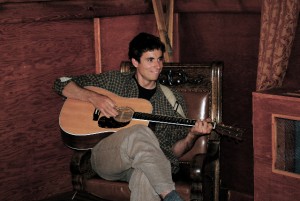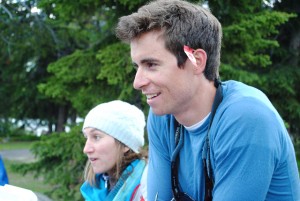Every day throughout my practicum, my class engaged in the MindUp! curriculum, where students were given opportunities to recalibrate, relax, clear their minds, and sit in silence amongst their teachers and classmates. Not only did this build upon the classroom environment, with students taking turns leading the class through breathing exercises, but also worked towards bolstering social and emotional development. The MindUp! curriculum has been inundating classrooms in BC and around the world as a method to bolster optimism, promote happiness, encourage student acceptance of diverse perspectives, and achieve focus and awareness of actions. (Erikson, 3).
The act of sitting in silence with others has initially been an awkward experience for those classes that I have introduced the exercises to for the first time. Having the ability to sit with confidence in engaged meditation with respect and appreciation for those around you, shows an elevated level of social awareness and emotional control. Our class engaged in the full MindUp! curriculum, which supplemented mindfulness sessions with neurological teachings on the plasticity of the brain. Students were given strategies around how to efficiently and effectively harness the power of their brains, and were empowered with the notion that they could reach higher levels of academic potential. This information can add to students’ intrinsic motivations to learn with the knowledge that with effort and focus, they can reach higher levels of academic success. The act of mindfulness added rich layers of leadership, respect, academic awareness and focus, social consciousness and emotional ascendency to the classroom.
After lunch every day in class, I would engage in mindful listening, whereby students would listen to a selection I had chosen within a genre that fluctuated from week to week. As part of the routine, students would ‘mindfully’ listen in silence, and be given a prompt, or something to listen for. Students were aware of various musical devices that I would bring to their attention, and would sometimes be asked to ascertain technical aspects within the song that was being played. Other times, students would be asked to find patterns in song, or count the BPM’s. On some occasions, songs by artists of various minority groups, would lead to enriching social commentary, and unearth issues around social justice. On other occasions, I presented students with writing prompts that were open ended, and tasked them to interpret, connect, and imagine various scenarios. The integration of MindUp! with the fine arts, social studies, mathematics, writing, speaking, and listening, connected diverse aspects of the curriculum and was immensely successful and efficient in the use of class time. Students loved the musical aspect of the sessions, and after having been exposed to my esoteric musical tastes, eventually came to enjoy hearing what abstract obscurity I would bring to class next. Music is one of my passions, and I used it as a method of connecting to the class. I was excited and drawn into the experience of listening, and so students were to.
On one occasion I performed John Cage’s ‘4:33,’ with my guitar and we spent some time debating the philosophical notion of ‘silence.’ I found that music, through the conduit of mindfulness, always led to interesting and sometimes candid moments of thrilling curricular integration.
These experiences have surfaced certain elements of my practice as a teacher. Routine is a fundamental aspect of the day to day workings of a class that frames and motivates students to actively engage in learning. Students anticipate certain consistencies, and the structure of the day flows with elements of new and familiar. I have found that students work well within this paradigm. By leapfrogging from routine to routine with new information injected in between, students have an idea of what the day will be made up with, and this familiarity activates students’ willingness to travel to new destinations along the way. Routine will structure the blueprint of my practice as a teacher.
Cultivating a social-emotional classroom that appoints significance to activities beyond the academic realm, is important to develop within the classroom. Through the MindUp! curriculum, I have seen students develop emotional and social aptitudes beyond their years, and come together as a class to create an environment that is focussed, respectful, and mature while being fertile for academic development. Given a space that is comfortable, and safe, students will be able to stretch their learning.
Teaching through my passion for music, has allowed me to connect with students, while integrating content in an accessible and fun way for students to engage with. Through music, I exposed my ‘humanness’ in a genuine way, and showed students how locating their passions can invigorate their lives and surface a desire to become a lifelong learner.
As a teacher, I want to develop routines and a social emotional awareness within the classroom while teaching through my passions. I want to lead by example, and share what it is in my life that is fulfilling. Passion is contagious, enthusiasm is fun; embracing diversity and sharing a drive to develop socially, emotionally and academically are the methods that I want to teach by.
Work Cited:
Gora, Susannah. (2010) Golden Opportunity. Neurology Now. 6(2), 14-17
Erickson, Jennifer: MindUp! Promotes Academic and Social and Emotional Growth. From: thehawnfoundation.org Accessed: 14/7/13





